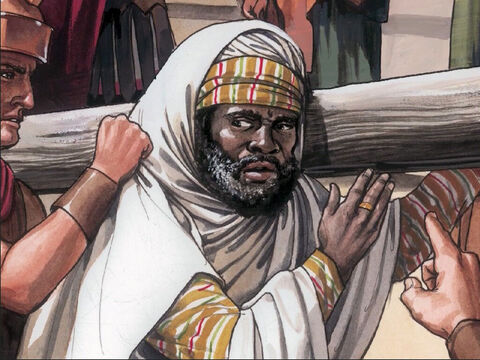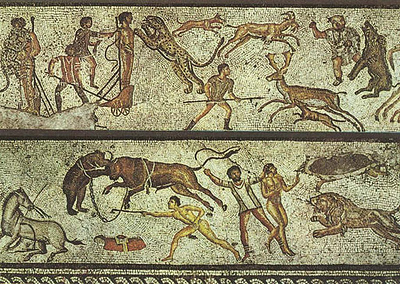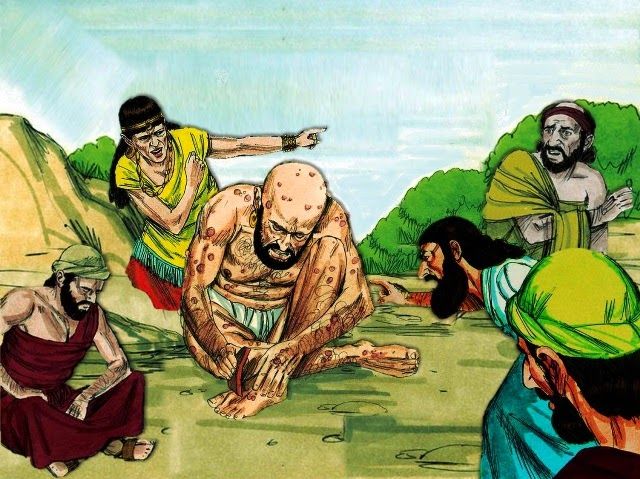Digging Deeper: Simon of Cyrene
Author: Mr. Kenneth Frank | Faculty in Theology, Living Education
Estimated reading time: 8 min.
Did you know that Jesus was so weakened by his various beatings before His crucifixion that a passerby was conscripted by Roman soldiers into carrying Jesus’ cross or crossbeam to the crucifixion site?
The Gospels draw attention to this stranger who was dragged into the commotion of the execution of a prophet from Galilee. This stranger’s sacrificial act of mercy is noted in the Gospels. Digging Deeper this week considers who he may have been, what he carried, and how this experience may have changed his life—and has changed ours.
Our focus verse is: “And as they came out, they found a man of Cyrene, Simon by name: him they compelled to bear his cross” (Matthew 27:32 KJV throughout). This story appears in all three Synoptic Gospels: Matthew, Mark, and Luke. The other two references are Mark 15:21 and Luke 23:26. John Gill’s Exposition of the Bible describes Cyrene as: “… a place in Libya, and one of the five cities called Pentapolis: which were these, Berenice, Arsinoe, Ptolemais, Apollonia, and Cyrene (l); Kir in Amos 1:5 is rendered by the Targum, קירני, ‘Cyrene’, as it is also by the Vulgate Latin” (e-Sword 13.0.0). It was a capital city about 800 miles west from Jerusalem, being where Tripoli is today.
Easton’s Bible Dictionary provides important historical information about the Roman province of Cyrene that was along the Mediterranean Coast: “A hundred thousand Jews from Palestine had been settled in this province by Ptolemy Soter (323-285 B.C.), where by this time they had greatly increased in number. They had a synagogue in Jerusalem [Acts 6:9] for such of their number as went thither to the annual feasts” (e-Sword 13.0.0). The NIV Cultural Backgrounds Study Bible adds: “… its population included many local Libyans, resident Greeks and Jews” (Tecarta Bible App).
Who was Simon?
In the Bible, several people are named Simon, an abbreviated form of Simeon. He was either born Jewish or was a convert (proselyte) of the Diaspora (Jews outside the Holy Land). The Cyclopedia of Biblical, Theological, and Ecclesiastical Literature by John McClintock and James Strong describes him as: “A Hellenistic Jew, born at Cyrene on the north coast of Africa, who was present at Jerusalem at the time of the crucifixion of Jesus either as an attendant at the feast (Acts 2:10) or as one of the numerous settlers at Jerusalem from that place (Acts 6:9)” (e-Sword 13.0.0).
The NIV Cultural Backgrounds Study Bible comments that: “Simon was a Greek name very commonly used by Jews (because it resembled the patriarchal name Simeon). His coming to Jerusalem probably suggests that he is Jewish by faith, whatever his ethnic background.” (Tecarta Bible App). He may have traveled to Jerusalem for Passover. Little did he suspect the experience that lay before him. Roman soldiers had the authority, called the right of impressment, to draft a passerby to help carry the cross to the crucifixion site. Simon was in the right place at the right time for this duty.
William Barclay’s Daily Study Bible characterizes what it may have been like for Simon when the Roman soldier approached him to bear Jesus’ cross: “This must have been a grim day for Simon of Cyrene. Palestine was an occupied country and any man might be impressed into the Roman service for any task. The sign of impressment was a tap on the shoulder with the flat of a Roman spear. Simon was from Cyrene in Africa. No doubt he had come from that far off land for the Passover. No doubt he had scraped and saved for many years in order to come. No doubt he was gratifying the ambition of a lifetime to eat one Passover in Jerusalem. Then this happened to him” (e-Sword 13.0.0).
The burden that changed him
The reason Simon was drafted to bear the cross is that Jesus had been so weakened by His scourging that he probably stumbled in carrying His cross, though He had set out doing so (John 19:17). The ESV Study Bible declares: “The skin and muscles of his back would have been severely lacerated, and he could have suffered severe injury to his internal organs” (Tecarta Bible App). It was customary for the prisoner to carry his crossbeam, called a patibulum, to the crucifixion site, where it was attached to the upright stake. The KJV Study Bible adds: “The transverse piece was usually carried separately and attached by rope to the vertical pole at the place of execution” (Ibid.).
It was also possible Jesus had been carrying the entire cross, which could weigh up to 30-40 pounds. Describing this cross, the ESV Study Bible details: “The most common Greek word for ‘cross’ (stauros), though originally designating a ‘sharpened pole,’ became associated before the NT with various penal means of suspending bodies (before or after death), including those employing a crux, or cross-shaped device, for crucifixion” (Tecarta Bible App). If it was the entire cross Jesus was carrying, Simon may have assisted Him by carrying one end.
John Gill’s Exposition of the Bible suggests that the Romans inducted Simon to help Jesus carry His cross to Golgatha: “… not out of good will to Christ, but fearing lest through his faintness and weakness, he should, die before he got to the place of execution, and they be disappointed of their end, the crucifixion of him; or because they were in haste to have him executed, and he was not able to go so fast as they desired…” (e-Sword 13.0.0).
Undoubtedly, this experience was life-changing for Simon. The NKJ Study Bible notes: “Simon must have been (or later became) a Christian; it is unlikely that he would be referred to by name if he were a stranger to the Christian community” (Tecarta Bible App). Some even suggest Simon is the Simeon of Acts 13:1 who served as one of the teachers in Antioch’s young church. If that was the case, his experience carrying Jesus’ cross, no doubt, propelled him to discipleship.
Simon’s sons, Alexander and Rufus, were later known by the early church (Mark 15:21). From the world of archaeology, The NIV Study Bible reports: “A first-century ad ossuary (a limestone box containing the bones of the dead; see note on Mt 26:3) bearing the inscription ‘Alexander (son) of Simon’ was found in 1941 in Jerusalem” (Tecarta Bible App). It may have been the same Alexander. John Kitto’s Popular Cyclopedia of Biblical Literature extends this linkage further: “The family of Simon seems to have resided afterwards at Rome; for St. Paul, in his epistle to the church there, salutes the wife of Simon with tenderness and respect, calling her his ‘mother,’ though he does not expressly name her: ‘Salute Rufus, and his mother and mine’ (Romans 16:13)” (e-Sword 13.0.0).
The true weight of the matter
The Gnomon New Testament by John Bengel offers a solemn lesson for all Christians from this account: “There was neither Jew nor Roman who was willing to bear the burden of the cross. Men were present at that time from Europe, Asia, and Africa. Even in the remotest regions Christ has since found those who would bear His cross.—ἵνα ἄρῃ, to bear) Simon is not said to have borne it unwillingly. Well has Athanasius (Book i. fol. 10, 11) said, in his sermon on the Passion [Suffering], ‘Simon, a mere man, bore the cross, that all might know that the Lord underwent, not His own death, but that of men'” (Bible Analyzer 5.4.1.22).
Spiritually, Jesus carried Simon’s cross, on which he would have died for his sins. Similarly, Jesus bore the cross for each one of us to remove our sins. At baptism, Christians are symbolically crucified with Christ (Romans 6:3-7). As Jesus’ disciples, we are to carry our crosses continually: “And he said to them all, If any man will come after me, let him deny himself, and take up his cross daily, and follow me” (Luke 9:23). This means death to ourselves so that we may live unto Christ.
The Apostle Paul used this same metaphorical language: “I am crucified with Christ: nevertheless I live; yet not I, but Christ liveth in me: and the life which I now live in the flesh I live by the faith of the Son of God, who loved me, and gave himself for me” (Galatians 2:20). Jesus was crucified outside the city gates of Jerusalem (Hebrews 13:12). Notice Paul’s use of this detail: “Let us go forth therefore unto him without [outside] the camp, bearing his reproach” (Hebrews 13:13). Every Christian vicariously carries Jesus’ cross as Simon literally did. We too have been drafted to do so, not by brutal Roman soldiers, but by our Savior Who liberated us from sin.

Kenneth Frank was born and raised in New Jersey, USA, and attended Ambassador College, graduating in 1973. He served in the Canadian ministry from 1973-1999, after which he returned to the USA to pastor churches in Maryland, Virginia, and North Carolina for 15 years. Having earned a BA degree from Ambassador College he later earned a MA degree from Grand Canyon University before being assigned to the Charlotte office to teach at Living University, now Living Education. Currently, he teaches the Survey of the Bible course to the on-campus students and writes the Digging Deeper column for our online Bible study program. He is married, has four children, and seven grandchildren.









